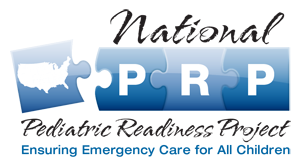
Get the facts on Pediatric Readiness and the National Pediatric Readiness Project (NPRP), which aims to ensure every emergency department (ED) has the resources, competencies, and policies needed for high-quality, equitable pediatric emergency care.
- What does it mean to be “Pediatric Ready”?
- Is Pediatric Readiness in emergency departments improving?
- Can an ED be prepared for pediatric cases without formal state recognition?
- Are states working to help EDs prepare for pediatric emergencies?
- Can I access my local ED’s score/Is ED data publicly available?
- Should I take my child to a pediatric-specific ED vs. a general one?
- Is it possible for all EDs to be prepared for pediatric emergency care?
What does it mean to be “Pediatric Ready”?
Our understanding of the impact of Pediatric Readiness continues to grow. Only within the last several years have researchers identified thresholds that are associated with improved outcomes.
Currently, Pediatric Readiness is measured on a scale of 0-100 by the NPRP Assessment, which is based on national guidelines: “Pediatric Readiness in the Emergency Department.” This voluntary assessment is a single, though important, tool for measuring readiness. It represents a baseline of the essential elements needed to care for and stabilize a child in the ED. Recent studies have identified a score of 88 or above on the assessment as associated with improved outcomes. But this research is ongoing, and every step toward improvement is important.
State ED recognition programs are one strategy to support improved Pediatric Readiness. If an ED has not been included in a Pediatric Readiness recognition program it does not necessarily mean the ED is not Pediatric Ready. Most recognition programs are voluntary. The state may not yet have a recognition program or the ED may not have applied to participate.
Is Pediatric Readiness in EDs improving?
Yes, in many areas.
EDs have made significant progress in Pediatric Readiness, as outlined in a recent research paper about the results of the 2021 NPRP Assessment. The 2021 scores improved from the 2013 scores among comparable questions in five out of six assessment categories. This is especially notable given the most recent assessment took place during the extraordinary challenges of the COVID-19 pandemic.
Can an ED be prepared for pediatric cases without formal state recognition?
Yes.
If an ED has not been included in a Pediatric Readiness recognition program it does not necessarily mean the ED is not Pediatric Ready. Participation in the NPRP assessment and many recognition programs are voluntary. The state may not yet have a recognition program or the ED may not have applied to participate.
Are states working to help EDs prepare for pediatric emergencies?
Yes.
57 states and territories have an Emergency Medical Services for Children (EMSC) Program that engages in ongoing data collection through the NPRP Assessment. States monitor and collaborate with EDs to help them address gaps and improve readiness through state-led initiatives. States programs offer training sessions, workshops, webinars, resources, and much more to support emergency providers. Recognition programs are just one strategy among many longstanding efforts to improve Pediatric Readiness.
Can I access my local ED’s score/Is ED data publicly available?
To an extent.
To encourage participation and engagement in the project, Individual ED scores are not publicly available. However, national-level results and data are publicly available. Researchers can request national-, state-, and hospital-level data for research purposes through a verified application process and that requires strict protocols for data confidentiality.
Should I take my child to a pediatric-specific ED vs. a general one?
Not necessarily.
In the case of a health emergency, calling 911 or going to your nearby ED is typically the best choice. 90% of children receive care in general and community EDs. All accredited EDs must meet certain standards of care, and most children visit the ED for mild or moderate illness or injury.
Pediatric Readiness is about taking steps to continually provide the best possible care for all children in all cases, including severe and/or uncommon illnesses or injuries, and including prompt transfer to a hospital with appropriate resources (such as a pediatric-specific hospital) when needed.
Is it possible for all EDs to be prepared for pediatric emergency care?
Yes.
Pediatric Readiness is attainable for all EDs. Emerging research estimates the cost for EDs to achieve high Pediatric Readiness ranges from $4 to $48 per patient, which is low compared to many life-saving public health interventions.
References:
- https://jamanetwork.com/journals/jamanetworkopen/fullarticle/2807059?resultClick=1
- https://media.emscimprovement.center/documents/Pediatric_Readiness_Outcomes_-_2023_Q5q8cow.pdf
- https://emscimprovement.center/domains/recognition-programs/
- https://airtable.com/appG9ZJc5iO6khjrO/shrK4KSw2XW3RT4z5/tblrCL8PCeMAEBIod/viwbBMzIw4dgFjicr/recyYq9ptUlBpftzu/fldOfmLwR9thukKxF/attQ2DJyGEvESuHtn?backgroundColor=blueDusty&viewControls=on